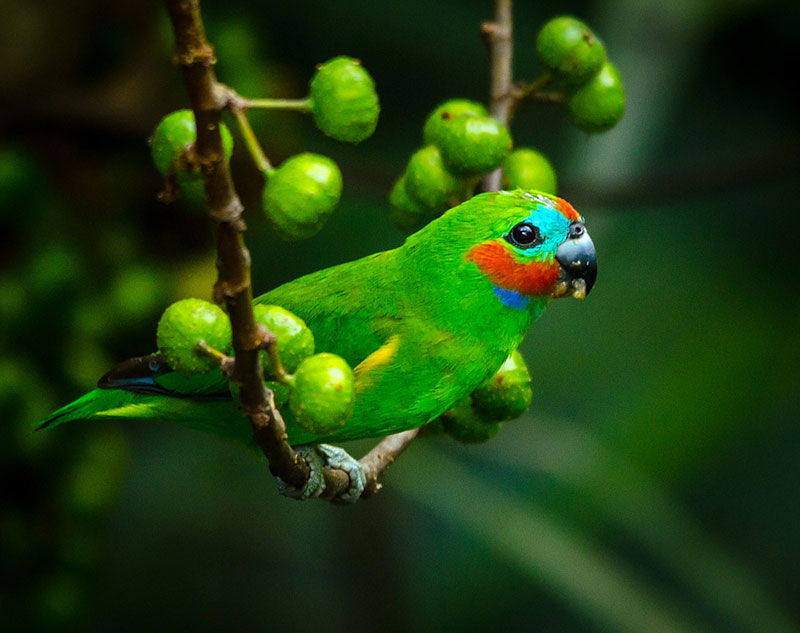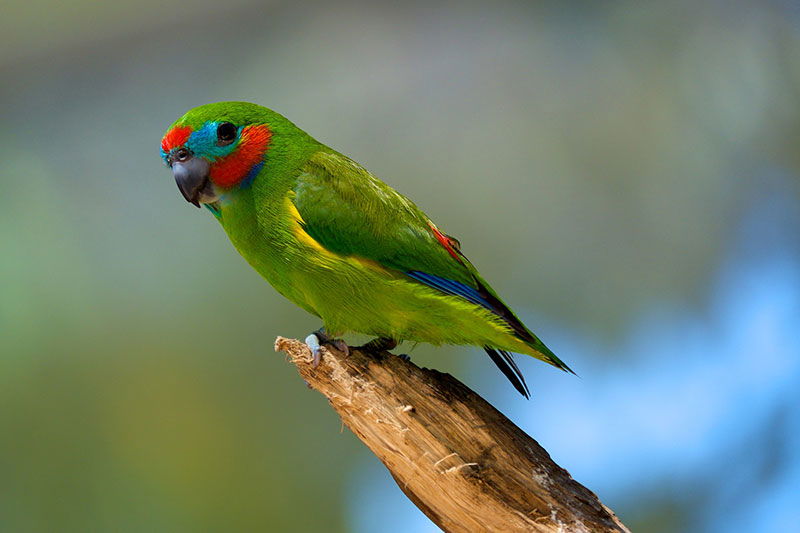Double-Eyed and Adorable
Michael Hurben, CC BY-SA 4.0, via Wikimedia Commons
The double-eyed fig parrot might not be the biggest bird in Australia, but it might just be the cutest!
This little bird is Australia’s smallest parrot. At just five and a half inches long, it’s about the same size as the length of a pen with no cap—pretty tiny! The puny parrot lives throughout the forests of New Guinea and the east coast of Australia, where it searches for figs, berries, seeds, nectar, and grubs to eat. Usually, the parrots look for food in pairs or small flocks. In this case, birds of a feather really do flock together!
And thanks to its beautiful green feathers, the doubled-eyed fig parrot has the perfect camouflage for its lush green habitat. Its color helps it blend in with the trees and plants and allows it to stay hidden from predators.

Before Adam and Eve sinned, there were no predators and prey because animals didn’t hunt each other. All animals were vegetarians, eating only plants. Sadly, Adam and Eve’s sin brought danger and death into the world. But God provided the original animal kinds with the ability to adapt, or change, in order to survive. Even though the tiny double-eyed fig parrot faces danger in our fallen world, thanks to God’s original designs, it has developed camouflage to give it a better chance at survival.
In addition to bright green feathers, male double-eyed fig parrots also have turquoise patches around their eyes and red and blue bands on their cheeks. Females aren’t quite as colorful—they have blue eye patches, but they have silver feathers on their cheeks instead of red. This is commonly seen in creation—many male and female animals of certain species look different than each other. But why?
Sometimes, males have special features to attract mates so that the species can reproduce and continue to thrive. Examples include peacocks, birds of paradise, and yes, the adorable double-eyed fig parrot. Females of these species usually choose to mate with the most attractive males. They see those fancy feathers and dazzling displays as proof that the male is healthy and has traits that they want to pass on to their offspring.

Since the females of these species don’t have to attract the males, it’s not as important that they have eye-catching acts themselves. Their more muted colors might help them “fly under the radar” and safely raise their young without attracting unwanted attention.
Beautiful birds like the double-eyed fig parrot show us just how much God cares for his creation. In his love and wisdom, he gave animals the ability to adapt in a fallen world. The beautiful and practical color of the green double-eyed fig parrot is just one more design that reveals an all-knowing, all-wise Creator! It’s so obvious that even a birdbrain can see it.
Fun Feathered Facts
- Many parrot varieties build nests in the holes of trees. But the double-eyed fig parrot can carve out its own hollow for nest building—usually in old, dead trees.
- The double-eyed fig parrot has several other names it’s known by, including the blue-faced fig parrot, red-faced fig parrot, dwarf fig parrot, and two-eyed fig parrot.
- For its small size, the double-eyed fig parrot has a large head and a short tail.
- © 2025 Answers in Genesis
- Privacy Policy
- Contact
- About
